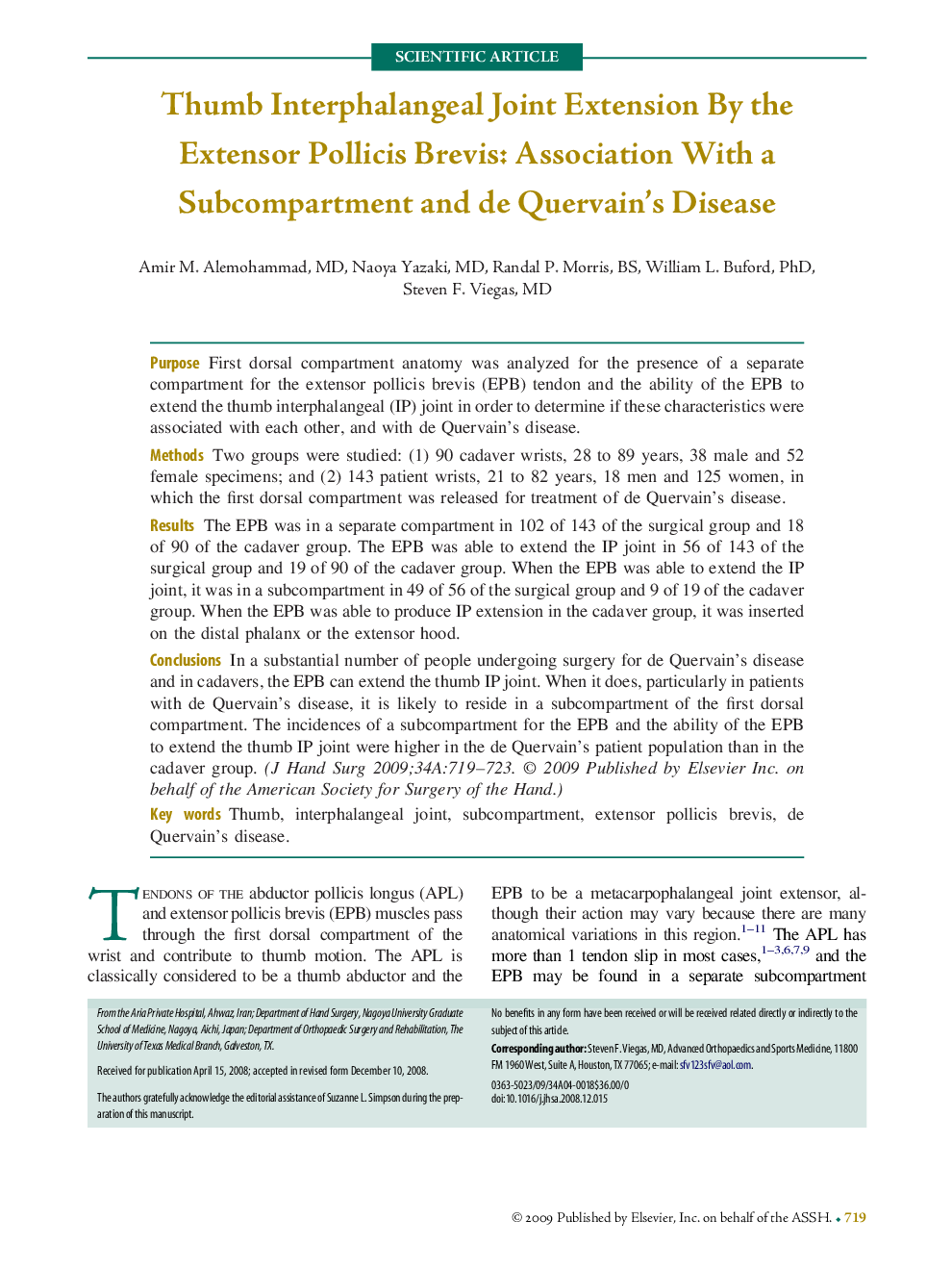| Article ID | Journal | Published Year | Pages | File Type |
|---|---|---|---|---|
| 4070687 | The Journal of Hand Surgery | 2009 | 5 Pages |
PurposeFirst dorsal compartment anatomy was analyzed for the presence of a separate compartment for the extensor pollicis brevis (EPB) tendon and the ability of the EPB to extend the thumb interphalangeal (IP) joint in order to determine if these characteristics were associated with each other, and with de Quervain's disease.MethodsTwo groups were studied: (1) 90 cadaver wrists, 28 to 89 years, 38 male and 52 female specimens; and (2) 143 patient wrists, 21 to 82 years, 18 men and 125 women, in which the first dorsal compartment was released for treatment of de Quervain's disease.ResultsThe EPB was in a separate compartment in 102 of 143 of the surgical group and 18 of 90 of the cadaver group. The EPB was able to extend the IP joint in 56 of 143 of the surgical group and 19 of 90 of the cadaver group. When the EPB was able to extend the IP joint, it was in a subcompartment in 49 of 56 of the surgical group and 9 of 19 of the cadaver group. When the EPB was able to produce IP extension in the cadaver group, it was inserted on the distal phalanx or the extensor hood.ConclusionsIn a substantial number of people undergoing surgery for de Quervain's disease and in cadavers, the EPB can extend the thumb IP joint. When it does, particularly in patients with de Quervain's disease, it is likely to reside in a subcompartment of the first dorsal compartment. The incidences of a subcompartment for the EPB and the ability of the EPB to extend the thumb IP joint were higher in the de Quervain's patient population than in the cadaver group.
